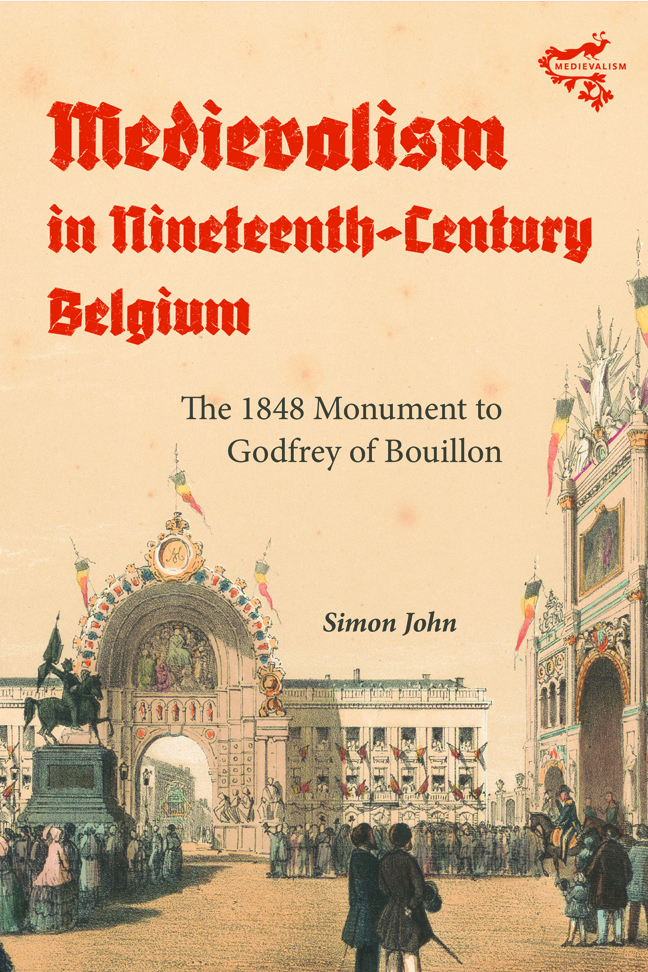Book contents
- Frontmatter
- Contents
- List of Illustrations
- Acknowledgments
- A note on language and names
- List of Abbreviations
- Preface
- Introduction
- 1 State-building, historical culture and public monuments in nineteenth-century Belgium
- 2 The physical setting of the monument: Brussels’ Place Royale
- 3 The creation of the monument
- 4 The changing meanings of the monument
- 5 The monument as a lieu de mémoire I: culture and politics
- 6 The monument as a lieu de mémoire II: history and national identity
- Conclusion
- Bibliography
- Index
- Medievalism
4 - The changing meanings of the monument
Published online by Cambridge University Press: 09 January 2024
- Frontmatter
- Contents
- List of Illustrations
- Acknowledgments
- A note on language and names
- List of Abbreviations
- Preface
- Introduction
- 1 State-building, historical culture and public monuments in nineteenth-century Belgium
- 2 The physical setting of the monument: Brussels’ Place Royale
- 3 The creation of the monument
- 4 The changing meanings of the monument
- 5 The monument as a lieu de mémoire I: culture and politics
- 6 The monument as a lieu de mémoire II: history and national identity
- Conclusion
- Bibliography
- Index
- Medievalism
Summary
The statue of Godfrey of Bouillon is incontestably the best that Brussels possesses of its genre, and perhaps, we think, it is to be placed in the rank of the beautiful statues erected in modern times. Butâ¦the pedestal is still incomplete: it awaits bas-reliefs in bronze and inscriptions.
L’Indépendance Belge describing the unfinished state of Brussels’ monument to Godfrey of Bouillon in August 1850, two years after its inauguration.
This chapter assesses how Brussels’ monument to Godfrey of Bouillon was received in nineteenth-century Belgium, and how that reception evolved down to the early twentieth century. It focusses in particular on the debates that took shape over what was to be added to the four recessed panels in the monument's pedestal. These debates were triggered just four days after its unveiling, when Charles Rogier wrote in his capacity as Prime Minister to the Académie royale de Belgique to canvas its members’ opinions on what should be added to its pedestal.
From the outset, those debates drew in members of the political elite, the press, and others. They shed light not only on perceptions of Godfrey of Bouillon but also on broader dimensions of Belgian politics and culture in this era. Central to them was the matter of the monument's inscriptions, and, above all, the language – or languages – in which they were to be composed. Whereas the previous chapter showed that the project to create the monument exemplified political cooperation, it is suggested here that the subsequent disagreements over its inscriptions – above all, the issue of whether the monument should feature a Flemish inscription in addition to a French one – typify the linguistic divide that became more pronounced in the second half of the nineteenth century. The issue brought figures who held that French alone ought to be used as the nation's language of government into dispute with those who believed that Flemish should have an equivalent official status in Flanders. Advocates for a Flemish inscription clearly felt that they had a stake both in the monument and the memory of the crusader. This correlated with the ethos of the Flemish movement in the mid-nineteenth century, whose members did not seek Flanders’ separation from Belgium – as some in later generations would – but strove instead for the ability to express their solidarity as members of the Belgian nation on terms equivalent to their Francophone compatriots.
- Type
- Chapter
- Information
- Medievalism in Nineteenth-Century BelgiumThe 1848 Monument to Godfrey of Bouillon, pp. 103 - 132Publisher: Boydell & BrewerPrint publication year: 2023

